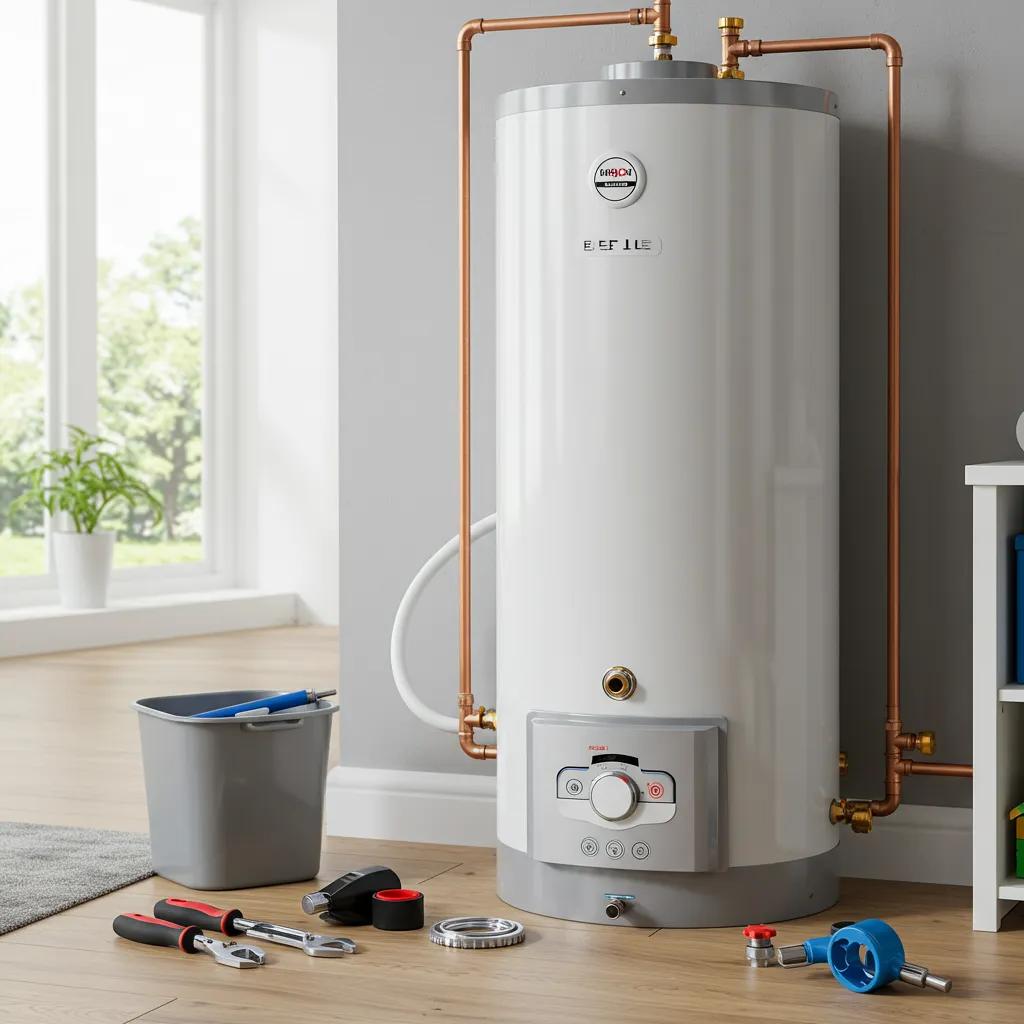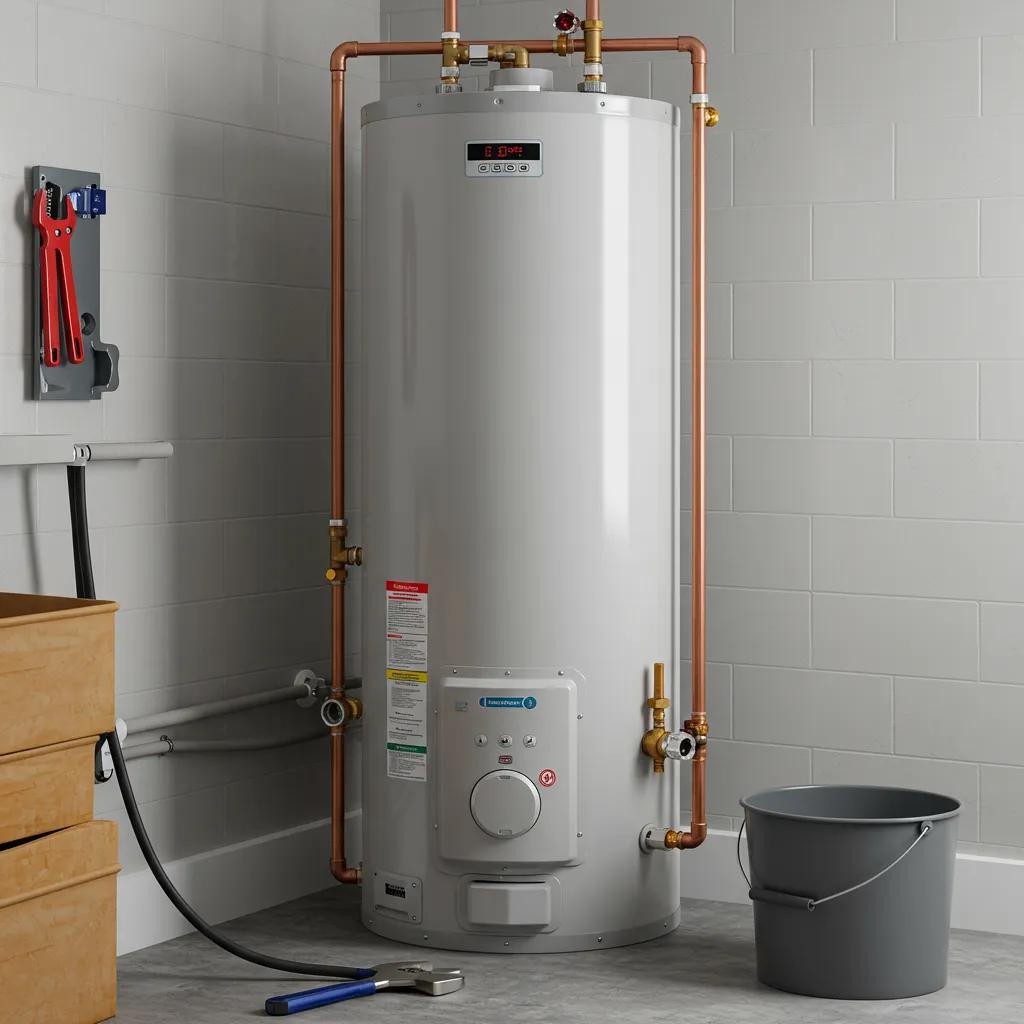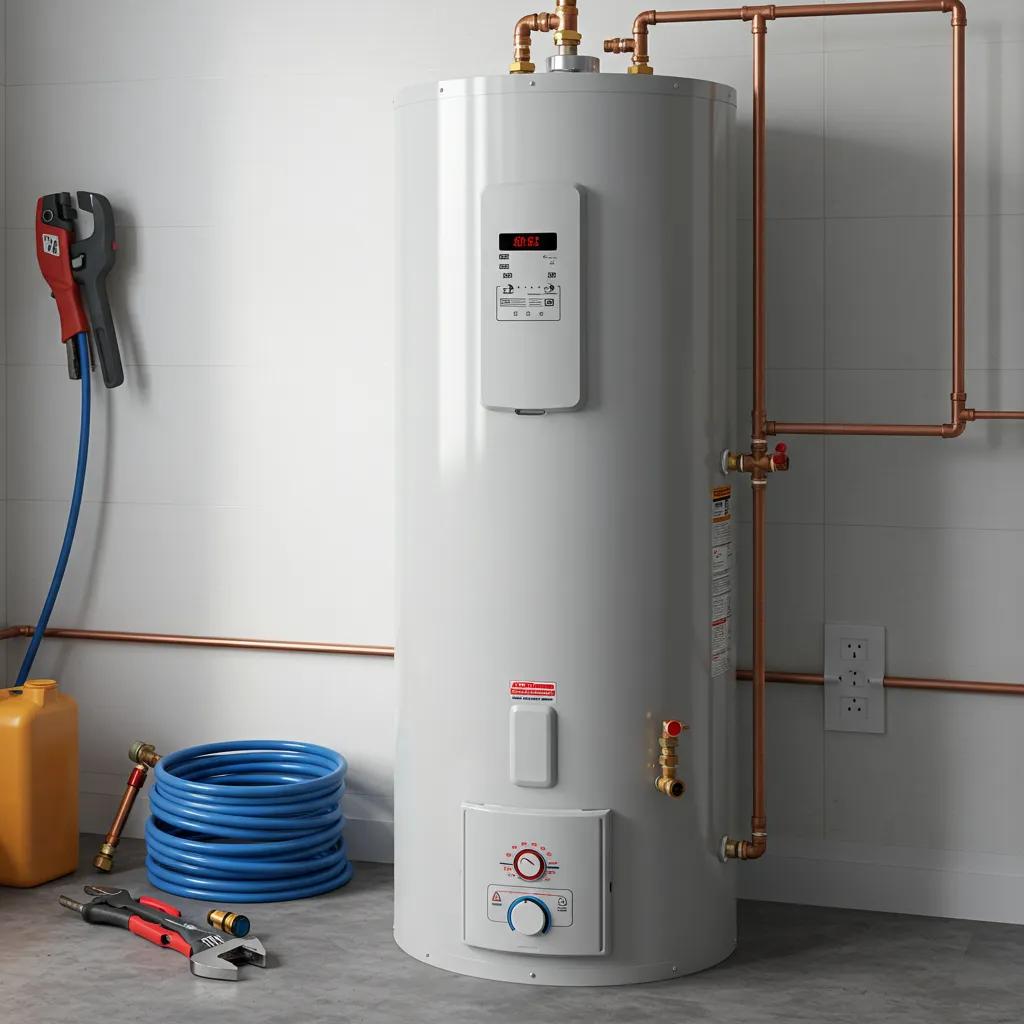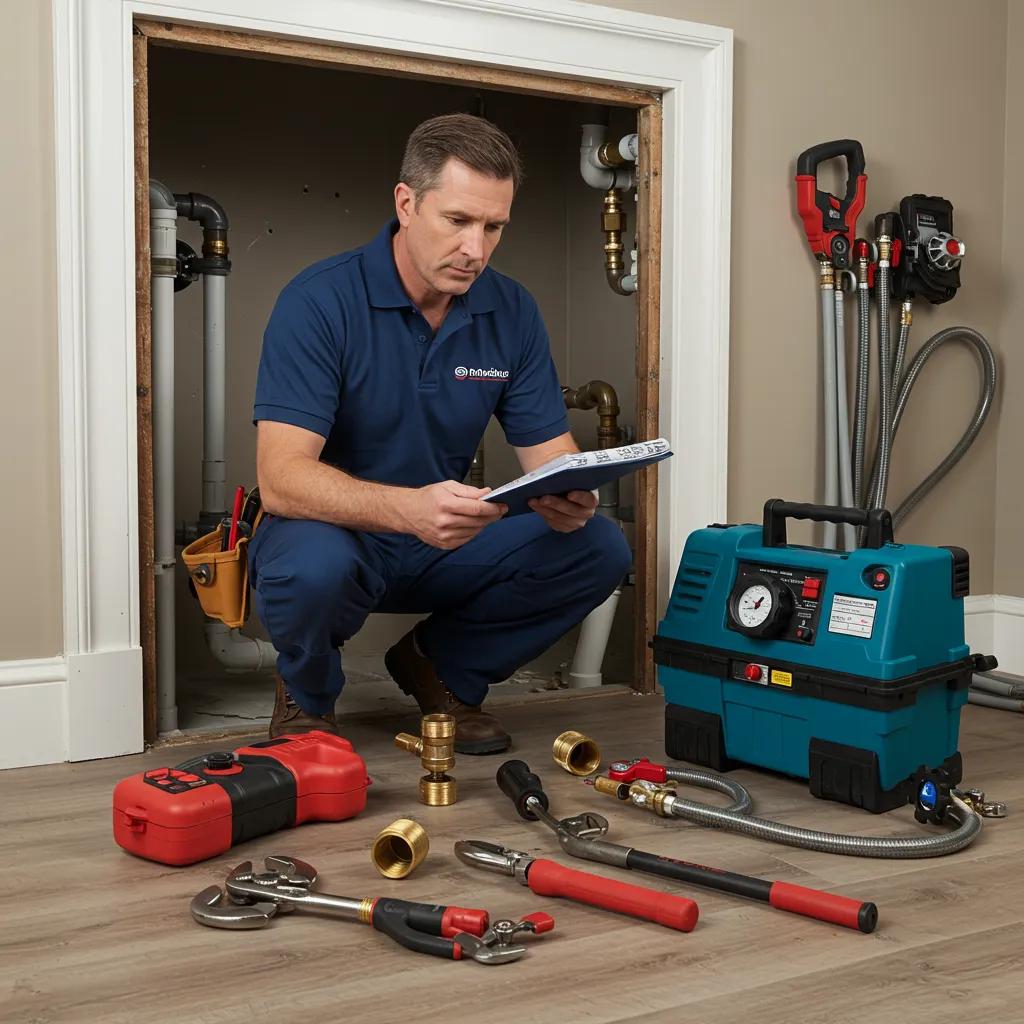How to Extend the Life of Your Water Heater: Essential Maintenance and Expert Tips for Erie, PA Homeowners

Every homeowner in Erie, PA knows that a reliable water heater protects comfort, health, and energy budgets. Regular water heater maintenance tips can prevent early failure, reduce energy bills by up to 16 percent, and extend service life well beyond the typical 8–12 years. In this guide, you’ll learn how to identify major water heater types, maintain critical components, flush sediment, inspect anode rods, set safe temperatures, apply insulation, combat hard water, recognize failure signs, choose professional service, and follow an annual checklist. By integrating these practical steps with professional expertise from C. Carlin Plumbing—Erie’s trusted plumbing and HVAC partner since 1994—you can maximize efficiency, prevent corrosion, and avoid costly emergency repairs.
What Are the Different Types and Key Components of Water Heaters?
Which Water Heater Types Should You Know About?
Tank water heaters store and heat 30–80 gallons using gas or electric elements, offering consistent supply but requiring space and insulation. Tankless units heat water on demand for virtually unlimited hot flow and can last over 20 years with proper care. Heat pump systems move existing heat to water for 2–3x efficiency gains, while solar models harness sunlight to preheat, reducing fuel costs.
What Are the Essential Water Heater Parts to Maintain?
Every water heater depends on a sacrificial anode rod to attract corrosive minerals, a TPR valve that prevents overpressure, a thermostat regulating temperature, and an expansion tank accommodating thermal volume changes. Neglecting any part can accelerate rust, cause leaks, impair safety, or shorten overall lifespan. Routine checks ensure each element functions as intended.
How Does Each Component Affect Water Heater Lifespan?
Anode rods prevent tank corrosion by sacrificing themselves to rust, while TPR valves discharge excess pressure that would otherwise damage fittings. Thermostats ensure temperatures stay at 120°F to avoid sediment bake-on and bacterial growth. Expansion tanks reduce stress on plumbing lines, preventing leaks and maintaining structural integrity for years to come.
Why Is Regular Water Heater Maintenance Crucial for Longevity?
How Does Flushing Remove Sediment and Improve Efficiency?
Flushing a water heater drains mineral deposits that accumulate at the tank bottom, restoring heat transfer and reducing energy use by up to 10 percent. Removing sediment also silences rumbling noises caused by steam pockets. Annual flushing prevents overheating of tank walls and early element burnout, extending service life and lowering monthly utility bills.
What Role Does the Anode Rod Play in Preventing Corrosion?
Anode rods are metal rods—typically magnesium or aluminum—installed in the tank to attract corrosive ions, safeguarding the steel lining. By corroding first, these “sacrificial” rods protect the tank interior. Inspecting anode rods every 2–3 years and replacing when more than 50 percent worn stops internal rust and prevents tank failure.
How Often Should You Perform Key Maintenance Tasks?
Annual flushing removes sediment buildup before it degrades efficiency. Anode rod inspections should occur every 2–3 years, with replacement if heavily pitted. TPR valve testing is recommended every 6–12 months to verify proper discharge. Thermostat calibration checks and pipe insulation updates should coincide with seasonal energy audits for peak performance.
When Should You Call a Professional for Water Heater Maintenance?
Complex tasks—such as gas burner cleaning, anode rod replacement on sealed units, or diagnosing TPR valve failure—require a licensed technician to guarantee safety and code compliance. Emergency repairs for leaks, complete hot-water loss, or pressure issues benefit from same-day service. Contact C. Carlin Plumbing for 24/7 response and honest pricing when DIY risks outweigh benefits.
How Do You Properly Flush Your Water Heater to Remove Sediment?
Annual flushing removes sediment, preserves heat transfer, and extends tank life by preventing corrosive pockets from forming. Follow these step-by-step instructions or schedule professional service with C. Carlin Plumbing if you prefer expert assistance.
- Turn off power or gas to the unit and close the cold-water supply valve.
- Attach a garden hose to the drain valve and run the hose to a safe drainage area.
- Open the TPR valve briefly to allow air in, then open the drain valve until clear water flows.
- Close the drain valve, refill with cold water, bleed air via a hot-water faucet, and restore power or gas.
Completing this process annually reduces noise, improves heating efficiency, and prevents premature component failure.
How and When Should You Inspect and Replace the Anode Rod?
What Is a Sacrificial Anode Rod and Why Is It Important?
A sacrificial anode rod is a metal rod—usually magnesium or aluminum—inserted through the tank top that preferentially corrodes to protect the steel lining. Without it, corrosive minerals attack the tank directly, causing leaks and tank replacement. Maintaining a healthy anode rod is the most cost-effective way to preserve tank integrity.
How Do You Identify Signs of Anode Rod Wear or Corrosion?
Inspect rods by draining a few gallons of water, loosening the hex head, and withdrawing the rod for visual evaluation. Look for heavy pitting, wall thinning, or a wire core showing through. If more than half of the diameter is gone or the rod is coated in rust, immediate replacement prevents tank damage.
Should You Replace the Anode Rod Yourself or Hire a Professional?
DIY replacement can be straightforward for accessible rods on electric units, but gas models often require burner removal and gas-line shutdown. Hiring a licensed technician ensures proper rod selection, safe gas handling, and code-compliant installation—especially critical for propane or natural-gas systems.
What Is the Optimal Water Heater Temperature for Safety and Efficiency?
Setting your water heater to 120°F balances scald prevention, bacterial control, and energy savings. Temperatures above 140°F increase scald risk, while settings below 115°F can allow Legionella growth. Maintaining the recommended level safeguards household health and reduces energy costs by minimizing standby heat loss.
The optimal water heater temperature is a delicate balance between preventing dangerous bacteria like Legionella and avoiding scalding injuries.
Residential Water Heater Temperature: Balancing Safety and Health Risks
There are two opposing risks when it comes to water temperature inside domestic water heaters; exposure toLegionella, the bacteria responsible for Legionnaires’ disease (pulmonary legionellosis), and the risk of scalding. In 1986, this dilemma was the subject of an editorial in theCanadian Medical Association Journal(1). A few months ago, Safe Kids Canada launched a media campaign aimed at preventing scalding by lowering domestic hot water temperature to 49°C at the tap (2). Among the means considered to reach this objective, Safe Kids Canada, with the support of some public health organizations, suggests and seems to favour lowering the temperature setting of domestic hot water heaters to 49°C.
Residential water heater temperature: 49 or 60 degrees Celsius?, 2004

Adjust thermostats safely by powering off, removing the access panel, and turning the dial to the desired setting. Restoring power and testing water temperature confirm proper calibration.
How Can Insulating Your Water Heater and Pipes Save Energy and Extend Lifespan?

Adding insulation to the tank and hot-water pipes reduces thermal loss by 25–45 percent, often paying for itself within one heating season. Insulation blankets and foam sleeves preserve heat, decrease standby energy waste, and reduce cycling stress on heating elements, which supports longer component life and lower energy bills.

Proper spacing from vents and clearances around gas burners ensure safe operation. Avoid insulating control panels or draft hoods on gas heaters to maintain proper ventilation.
How Does Hard Water Affect Your Water Heater and What Are the Solutions?
High mineral content in Erie’s hard water accelerates sediment buildup, clogs dip tubes, and reduces heating efficiency by up to 20 percent. Mineral deposits also corrode tanks and heating elements, leading to premature failure and costly replacements.
Water softeners exchange calcium and magnesium for sodium or potassium ions, preventing scale formation and preserving heat-transfer surfaces. Filtration systems can remove iron and chlorine, further protecting tank linings. Local water quality tests reveal Erie County’s hardness levels, guiding homeowners toward the right treatment system to maximize heater lifespan.
What Are the Signs Your Water Heater Needs Professional Service?
Common indicators of imminent failure include visible leaks at fittings or valves, gurgling or banging noises from sediment-induced steam pockets, insufficient hot water despite correct thermostat settings, and cloudy or discolored water due to rust. Gas units may exhibit yellow burner flames or pilot outages.
- Leaks that persist after tightening fittings
- Loud rumbling or popping sounds when heating
- Rapid tank drainage during flushing
- Cold water mixing with hot flow
When these symptoms appear, prompt professional inspection by C. Carlin Plumbing prevents full tank collapse and restores safe operation.
Why Choose C. Carlin Plumbing for Water Heater Maintenance and Repair in Erie, PA?
C. Carlin Plumbing has served Erie County since 1994 with licensed, insured technicians offering over 150 years of combined expertise. Our customer-centric approach ensures honest, upfront pricing with no hidden fees and same-day service for urgent water heater repairs. As Erie’s go-to plumbing and HVAC provider, we offer 24/7 emergency response and comprehensive maintenance programs designed to prevent breakdowns before they occur.
- Local, family-owned contractor with deep community roots
- Skilled in tank, tankless, gas, electric, and heat-pump systems
- Transparent estimates and quality workmanship guarantee
- Emergency availability for complete hot-water loss and safety failures
What Is the Annual Water Heater Maintenance Checklist to Maximize Lifespan?
Each season, follow these proven tasks to preserve performance and safety:
- Flush tank to remove sediment and maintain efficiency.
- Test TPR valve to verify proper pressure relief.
- Inspect anode rod every 2–3 years for corrosion protection.
- Adjust thermostat to 120°F for optimal safety and savings.
- Check pipe and tank insulation for heat-loss prevention.
- Evaluate water softener and filtration performance.
Performing these DIY tasks keeps your heater running smoothly, while complex inspections or component replacements warrant a professional service call. Consistently following this checklist can reduce energy costs, prevent emergency repairs, and extend water heater life by several years.
Don’t wait for a cold shower or unexpected repair bill—schedule your water heater maintenance or emergency service with C. Carlin Plumbing today to get a free estimate and keep hot water flowing reliably in Erie, PA and Erie County.



